MotionCapture
Latest

100 years of motion-capture technology
Modern motion-capture systems are the product of a century of tinkering, innovation and computational advances. Mocap was born a lifetime before Gollum hit the big screen in The Lord of the Rings, and ages before the Cold War, Vietnam War or World War II. It was 1915, in the midst of the First World War, when animator Max Fleischer developed a technique called rotoscoping and laid the foundation for today's cutting-edge mocap technology. Rotoscoping was a primitive and time-consuming process, but it was a necessary starting point for the industry. In the rotoscope method, animators stood at a glass-topped desk and traced over a projected live-action film frame-by-frame, copying actors' or animals' actions directly onto a hand-drawn world. The technique produced fluid, lifelike movements that animators couldn't achieve on their own.

With 'Siren,' Unreal Engine blurs the line between CGI and reality
Epic Games has been obsessed with real-time motion capture for years, but the company is now trying to take its experiments with the technology one step further. Enter "Siren," a digital personality that it created alongside a few prominent firms in the gaming industry: Vicon, Cubic Motion, 3Lateral and Tencent (which just became a major investor in Ubisoft). The crazy thing about Siren is that she comes to life using live mocap tech, powered by software from Vicon, that can make her body and finger movements be captured and live-streamed into an Unreal Engine project.
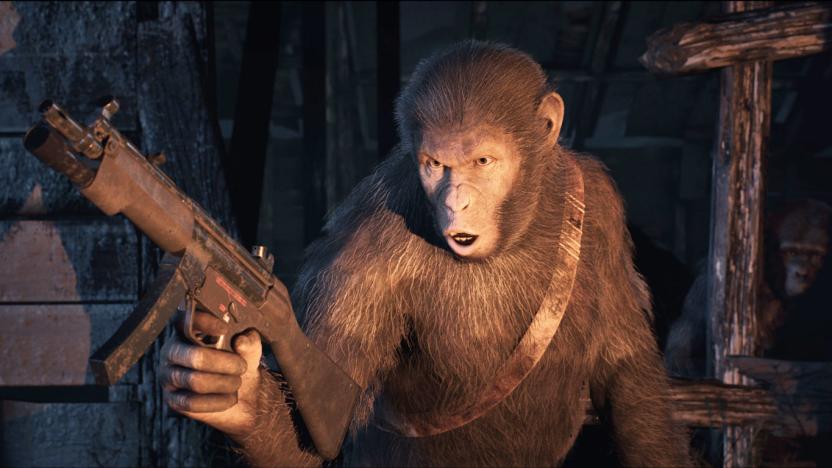
‘Planet of the Apes: Last Frontier’ multiplayer will test friendships
Planet of the Apes: Last Frontier is an entirely choice-based game. There are no real heroes or villains among the humans and apes you play as, and no right or wrong paths to take towards the conclusion of this choose your own adventure. Atypical of storytelling games, though, there's a multiplayer element that's almost meta. Not only do you have to resolve conflicts within the game, you also have to do it within your own living room, debating, persuading and occasionally forcing other players to accept your point of view to move the narrative forward.

The real-time motion capture behind ‘Hellblade’
In a makeshift changing room filled with Disney Infinity figures, I strip down to my boxers and pull on a two-part Lycra suit. It feels tight, and the top half shimmies up toward my waistline as soon as I stretch or stand up straight. How anyone is able to act in this thing is a mystery to me. Sheepishly, I gather my belongings and trot back to the motion capture studio that sits at the end of Ninja Theory's offices in Cambridge, England. Inside, a couple of engineers scurry about, prepping cameras and cables. For years, movie and video game studios have used mocap to bring digital characters to life. From detective Cole Phelps in L.A. Noire to the powerful Caesar in Planet of the Apes, the technology has delivered some truly moving, actor-driven performances. Normally, however, motion capture scenes are processed by an animator hours, days or weeks after they've been captured on set. It's a time-consuming process, and one that involves some guesswork. In a sparse, lifeless room, directors are forced to imagine how a take will look in the final sequence. Not so with Ninja Theory. The video game developer has a unique setup that allows Chief Creative Director Tameem Antoniades and his team to preview scenes in real time. Pre-visualisation, or pre-vis, has existed before in the industry, but it's typically limited to body tracking. Full-character modelling is rare, especially at the kind of fidelity Ninja Theory is shooting for with its next game, Hellblade: Senua's Sacrifice.
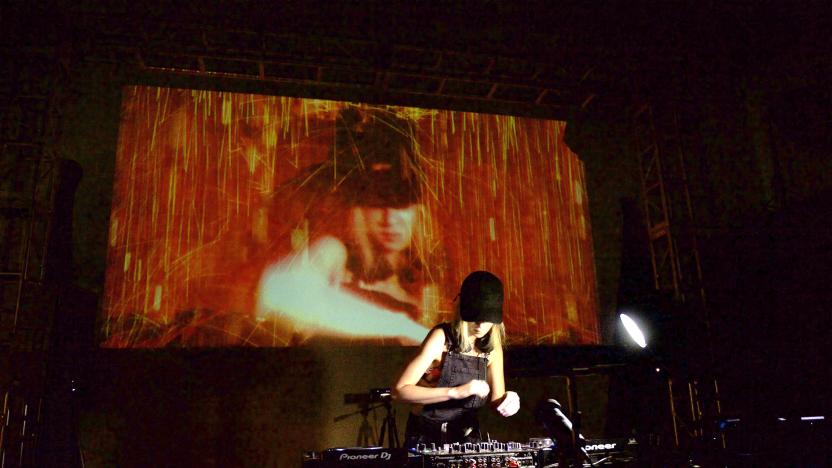
Microsoft powers a DJ’s live show with a Surface Book and Kinects
When it comes to live shows, the visuals are key to making a lasting impression. I'd even argue that what you see is just as important as the quality of the music. It is a performance, after all. Touring musicians employ all kinds of A/V gear in an attempt to offer a unique experience for concertgoers. For years, some acts have turned to Microsoft's Kinect camera to capture movement live, translating that to graphics on a video display, among other things. To make the camera-based setup more portable, Microsoft teamed up with DJ Alison Wonderland to create a simplified Kinect-driven system that runs primarily on a Surface Book.
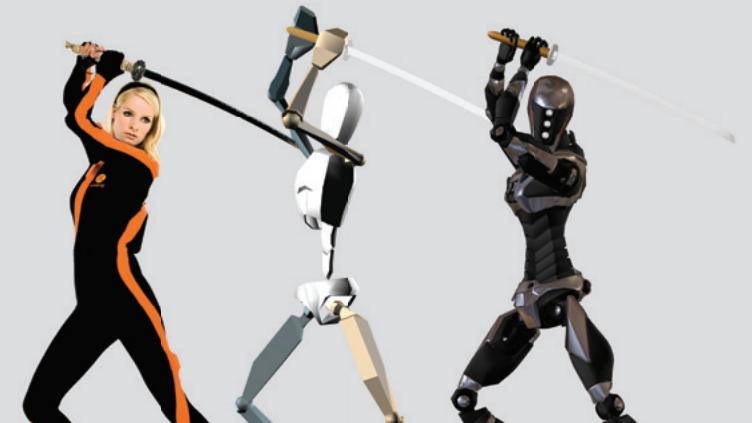
Xsens body suits are getting even better at motion capture
Motion capturing is becoming more important for games and movies alike, but unless you're ready to shell out for a complicated rig and dedicated studio space, it's incredibly difficult. Xsens has been working to solve that problem for the last decade with its custom body suits, which handle all of the motion capturing work without the need for any external sensors. The one problem with the company's suits so far? Metal -- or anything that can disrupt its embedded magnetometers. But at E3 this week, Xsens showed off the latest version of its software, which no longer gets thrown off by metallic objects.
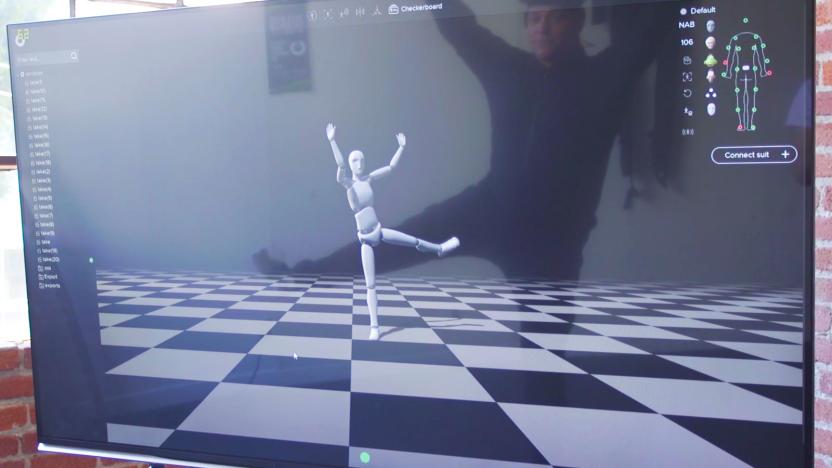
This mocap suit records Hollywood-quality animation at indie film prices
Conventional motion capture rigs -- the ones that use visual markers and arrays of infrared cameras -- cost tens of thousands of dollars, making them prohibitively expensive for everyone but major studios. But a new, cameraless system from Danish startup Rokoko, called the Smartsuit Pro, aims to make Hollywood-quality motion capture affordable for everybody.
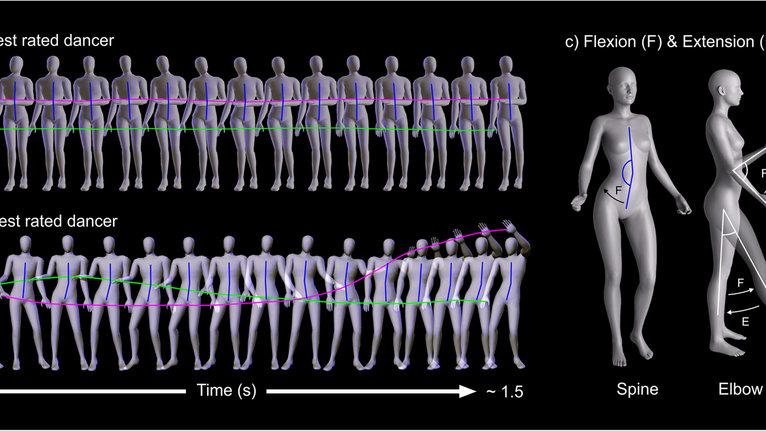
Science confirms what we already know: It's all in the hips
To find out what people think of lady dancing, you don't need to head to the club. Instead, researchers in the UK outfitted female dancers with motion capture rigs, much like the ones that bring digital movie characters like Gollum or Jar Jar Binks to life. According to science, then, women who swing their hips while moving their legs and thighs independently are rated high on attractiveness.
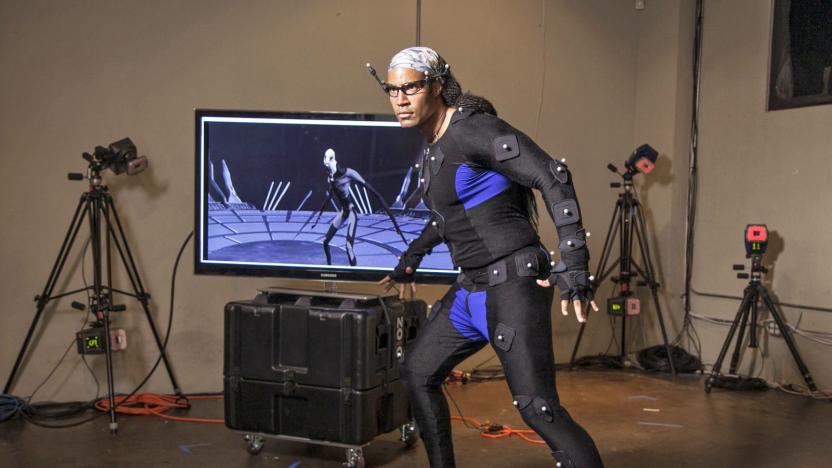
Disney's real-time motion capture tech only needs a few sensors
Motion capture systems typically require subjects to wear loads of sensors to be able to follow their movements. Disney wants to simplify the process, so its research lab has designed a physics-based system that needs much fewer sensors to work. A human actor can, say, wear sensors on both hands, both feet and the head only -- as you can see above, five sensors are comparably few. The physics-based system then predicts how the rest of the body moves, looking for limb and joint positions that are physically plausible based on the activities of the subject's hands and feet.

Disney makes facial capture tech more practical for movies
If you don't see facial motion capture everywhere in movies and video games, there's probably a good reason for it. In order to train a capture system to match expressions, you frequently have to record the actor making all kinds of faces in different conditions... that's a lot of effort, especially for studios that don't have much time or money. Disney Research has a better way. It recently developed a face capture system that uses only a tiny number of recordings and synthetically generates the data you need to train the system. The solution is a uniformly-lit multi-camera rig (only one camera is active, the rest are for lighting) that creates an adjustable 3D model of the actor's face that you can use to create the info you need.
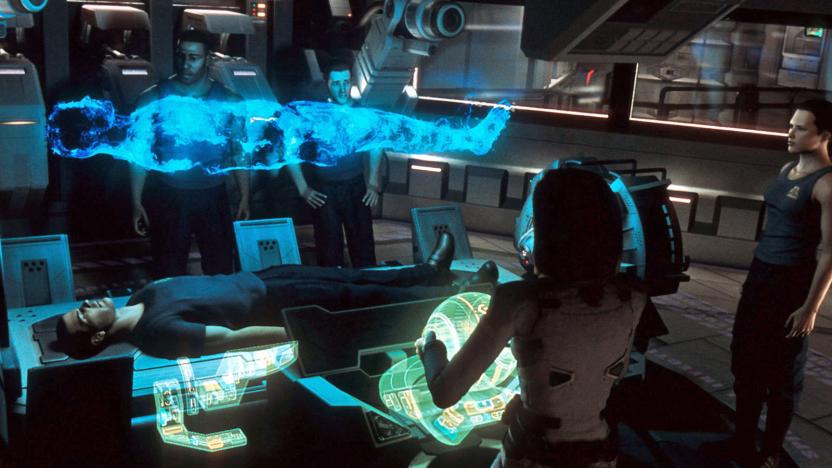
Recommended Reading: How the 'Final Fantasy' film helped Hollywood
The 'Final Fantasy' film bombed, but its motion capture revolutionized Hollywood Jordan Zakarin, Inverse The animated Final Fantasy: The Spirits Within film may not have been a success in terms of earnings, but the movie did provide some useful insight for motion capture. Inverse takes a look at the film's influence on filmmakers and realistic computer-generated characters despite its less than stellar reputation.
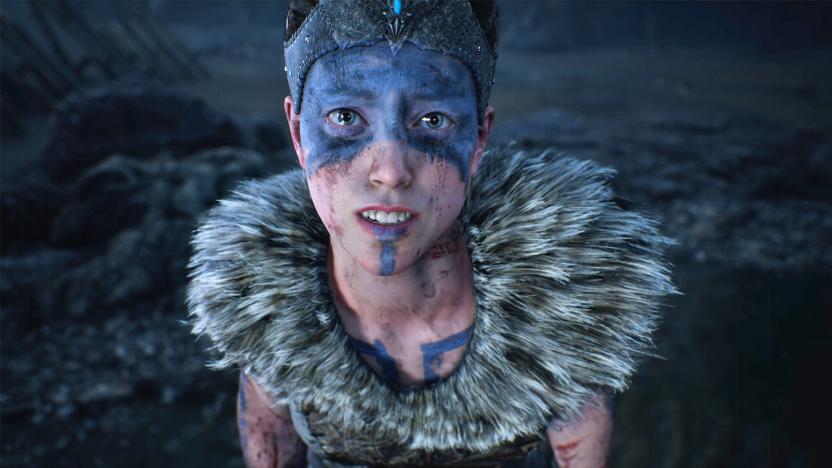
'Hellblade' takes real-time motion capture to the next level
Yesterday, during the Epic Games keynote at GDC 2016, Ninja Theory showed off a live motion capture demo for Hellblade, its upcoming AAA indie title. The results are absolutely stunning. Tameem Antoniades, Ninja Theory's chief creative director, described the real-time animation performance as historic, and people at the event seemed to validate his excitement. Interestingly enough, the game has been renamed Hellblade: Senua's Sacrifice, paying tribute to the main character in this combat-heavy story. But you're probably here for the video, so have at it -- we promise it doesn't disappoint.

Watch Jason do what he does best in 'Friday the 13th' game
A slasher movie is only as good as its big bad, and that goes doubly so for interactive horror flicks. Take the upcoming Friday the 13th game, for example. To ensure that its Jason is as terrifying as possible, the team at Gun Media enlisted Kane Hodder, the man behind the hockey mask from the film franchise's seventh through tenth installments to terrorize the forever-randy camp counselors. Even though everyone in the video below are wearing mo-cap suits on a sound stage, it's hard to not cringe when Hodder tests the flexibility of the human leg, arm, neck, and, well, just about every appendage he lays hands on.

Homer Simpson will broadcast live, with some motion-capture help
The Simpsons, live! Well, at least partially. In a new episode set to broadcast on Sunday May 15, Homer Simpson will speak live to viewers, commenting on the day's news as well as answering fans' questions. (You can can tweet your queries to him starting in early May, using the #homerlive hashtag.) How is that even possible? According to The Wrap, it apparently involves a "first for animation", tying together motion capture, real-time animation and some all-important improvisation.

Watch how 'Star Wars' turns people into CG characters
Heads-up: spoliers ahead. It's not shocking to hear that the frequently practical visual effects of Star Wars: The Force Awakens are still loaded with computer graphics, but you might be surprised to know just how much effort went into blending real people with virtual characters and worlds. Both IAMAG and FXGuide have posted clips showing the work involved, and it's clear that there's a whole lot more involved than green screens. The highlight by far is the rendition of barkeeper Maz Kanata. Lupita Nyong'o wore a special, patterned suit to let her perform on-set, and performed separate motion capture sessions (using a stereo head rig) to get her expressions down pat. The team also used software to tweak Maz's facial features after the fact.

The VR arcade of the future will look something like this
I knew I was on solid ground. I knew that no matter if I misstepped, I wouldn't fall hundreds of feet, plummeting to my death in some CG-Egyptian ruin. And yet, I was shaky, desperately reaching out for a handhold to steady myself, unable to calmly place one foot in front of the other as I attempted to cross a chasm bridged by a collection of meager wooden beams.
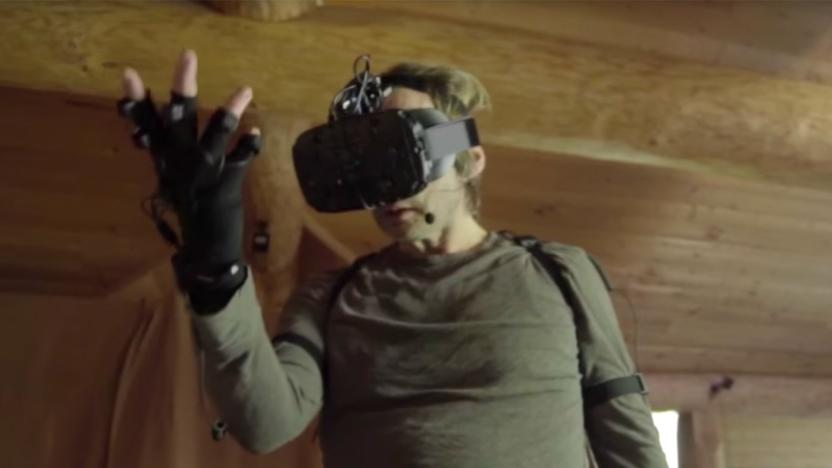
VR brings better motion capture to your video games
The problem with conventional motion capture is that you can't see the world you're supposed to be acting in. How do you get a feel for that epic fantasy landscape when you're staring at an empty room? Cloudhead Games has an idea. For its upcoming The Gallery: Call of the Starseed, it's using HTC's Vive virtual reality headset for motion capture, not just gameplay. The headset immerses actors in a scene while giving them more helpful teleprompting and visual cues. And when it's combined with a camera-free motion system like the Perception Neuron, you don't need a big, dedicated room -- performers can wander around a quiet corner of the office.

The Chemical Brothers bring Hollywood special effects to dance music
I look around at the sea of glowing faces surrounding me in the dark of Randall's Island in New York. There's no fist pumping. Their feet aren't shuffling. Instead, they're looking straight ahead at a large hand-drawn figure on a black screen. The frame, shaped like a human body, is filled with an entangled web of white lines. It appears to stand behind a barricade of light beams that shoot up from the stage. When the rapper Q-Tip's voice booms -- "World, the time has come to galvanize"-- the figure shakes furiously as if trying to break free from its enclosure. With every beat of the iconic Chemical Brothers track, the abstract form pushes back with swift choreographed moves. It struggles for a while before it breaks down the light-built cage and spins freely with the elegance of a trained contemporary dancer.

Apple buys motion-capture company that worked on 'Star Wars'
Apple's latest startup pickup is Faceshift, a company that specializes in facial motion capture -- often doing it without any need for physical "markers" on the model's face. Cupertino confirmed the deal to Techcrunch, which also discovered that several Faceshift employees are already working for Apple in Europe. While a lot of Faceshift's technical demos have focused on real-time animation based on camera-based motion capture, it also works on improving facial CGI animation in movies and other media. (That's where the Star Wars connection comes in.) It's a bit of a reach to figure out exactly how the startup's work will dovetail into Apple's machinations for the future -- but at least it's something a little more interesting than another map company.

Real Virtuality shows us what multiplayer VR might look like
2016 is shaping up to be the year the world gets virtual -- with immersive head-mounted displays coming from the likes of Facebook, Sony, HTC (and Valve) and Microsoft--but so far we've mostly seen individual, tethered, seated experiences. Can't we do better? The minds behind Real Virtuality think so: they've made a full-scale, motion-captured virtual reality platform with multi-user support.














